YAMAHA’S PROTOTYPE ELECTRONIC POWER STEERING & STABILIZER FOR MOTOCROSS
YAMAHA’S PROTOTYPE ELECTRONIC POWER STEERING & STABILIZER FOR MOTOCROSS
This is the second big news topic coming from Yamaha today (read about their new Electric Trials bike here). At first glance, it seems like a total gimmick to add power steering to a dirt bike. But, at second thought, if it works as a steering stabilizer too, it could be good. Read below for the Yamaha press release about their new prototype system, their new Australian factory racer and test rider and for photos of steering stabilizers on factory bikes.
Yamaha press release: The prototype steering support system uses a torque sensor, magnet technology and an actuator that result in steering damper benefits at high speed and steering assist input at low speed.
This means riders will enjoy improved stability with reduced fatigue at high speed and in rough conditions while assisted steering contributes to lightness and agility at low speed. This assistive intervention has the advantage of feeling completely natural. The magnetostrictive system already has a proven track record in detecting torque with Yamaha’s electrically power-assisted bicycles.
The lightweight system has been tested by Australian racer Jay Wilson who is currently working for the factory and competing with the All Japan Yamaha Factory Race Team. The team will compete in this year’s All Japan Motocross Championship with YZ450FM and YZ250F motocross racers fitted with the unique new system.
The decision to use race conditions to develop electronic power steering for Yamaha motorcycles will deliver real-world R&D feedback. Yamaha plans to use the wealth of data it acquires in the harsh environment of top-level motocross competition to accelerate the system’s refinement.
This is the first step by Yamaha into a new area of electronic assistance designed to improve motorcycle stability and agility. The system has been developed under the Transforming Mobility focus area of the company’s long-term vision of ART for Human Possibilities.

Yamaha aims to equip a cross section of its motorcycles with innovative EPS systems to provide riders with greater levels of fun, safety, and comfort.
Further technical details and information about future production model fitment is yet to be released.
HONDA’S 2004 ELECTRONIC STEERING DAMPENER FOR STREET BIKES
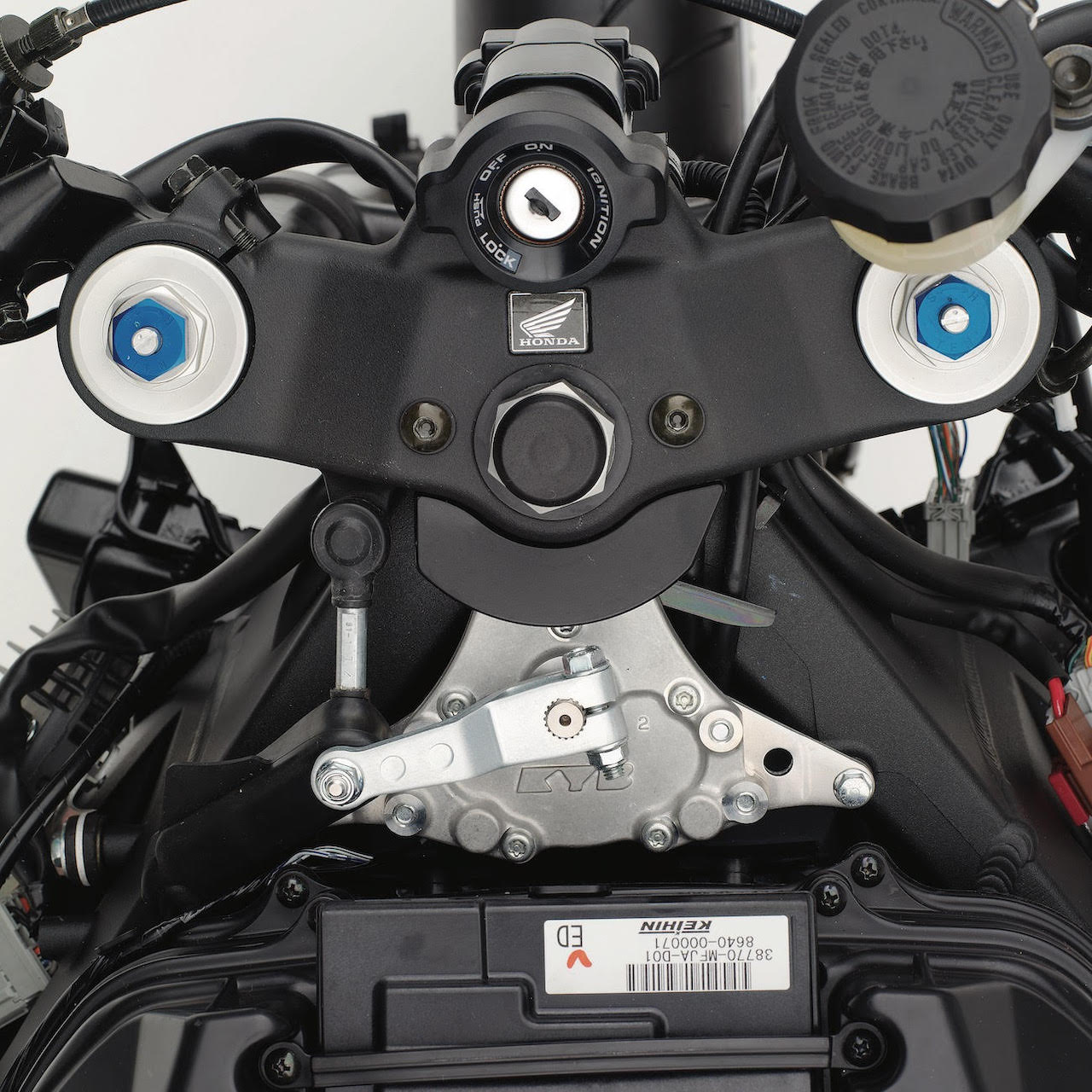 This is Honda’s version of the electronic steering dampener that they introduced for their street bikes in 2004.
This is Honda’s version of the electronic steering dampener that they introduced for their street bikes in 2004.
Honda’s HESD Steering Damper 2004 press release: Steering dampers are not new, but the traditional damper has been superceded. For years, riders have fitted steering dampers for high-speed racing conditions in off-road competition as well as road racing. Whatever the application, steering dampers help reduce excessive steering movement by incorporating a damper connecting a motorcycle’s forks and frame. Some units use simple friction dampers, while others are of hydro-mechanical design.
In general, Honda avoided installing these devices on motorcycles because all existing
designs included inherent drawbacks that compromised the benefits. Typically, when a steering damper was set for high-speed performance, the motorcycle’s handling would be adversely affected at moderate and lower speeds not a good trade off for general purpose riding. If a compromise setting was selected to mollify a steering damper’s negative effects on low-speed handling, the high-speed benefits were similarly reduced again, not much net gain. So when Honda’s engineers decided a maximum-performance machine such as the CBR1000R would benefit from the positive aspects of a steering damper, they simply decided to reinvent the device to reap the full rewards while eliminating the historic drawbacks.
Unlike past designs, the new Honda Electronic Steering Damper (HESD) has no fixed damping characteristics. Instead, damping action is controlled by the CBR1000RR’s Electronic Control Unit (ECU), which Damper chamber automatically varies damping force according to vehicle speed and acceleration over a wide range of riding conditions. Jointly developed in cooperation with Kayaba, the HESD mounts atop the steering head and a linkage arm connects the HESD to the triple clamp. Within the damper unit, a large chamber filled with oil is divided into two sections by a moving vane connected to the linkage arm. In response to steering movements transmitted by the linkage arm, the vane forces oil between the left and right sides of the chamber through various passages, including a main valve controlled by a linear solenoid that receives its control signals from the ECU.
At lower speeds, the damper’s main valve opens fully and therefore creates virtually no perceptible damping effect. Result: a light steering feel. As speed and rate of acceleration increase, the linear solenoid constricts oil flow between the two sides of the chamber, resulting in the desired amount of increased steering damping. Four one-way check valves ensure that oil flows through the main valve in only one direction, whether the vane is moved to the right or the left. A relief valve maintains internal pressure below a designated set level, while another small piston compensates for temperature-induced changes in oil volume.
Technical aspects notwithstanding, CBR1000RR riders will reap the benefits of the new HESD in the form of confidence-inspiring handling, making the riding experience all the more enjoyable. Once again, Honda has harnessed technical sophistication into a seamless package that enhances the pleasure of riding.
AUSTRALIA’S JAY WILSON HEADS TO JAPAN WITH NEW RACER/DEVELOPER ROLE
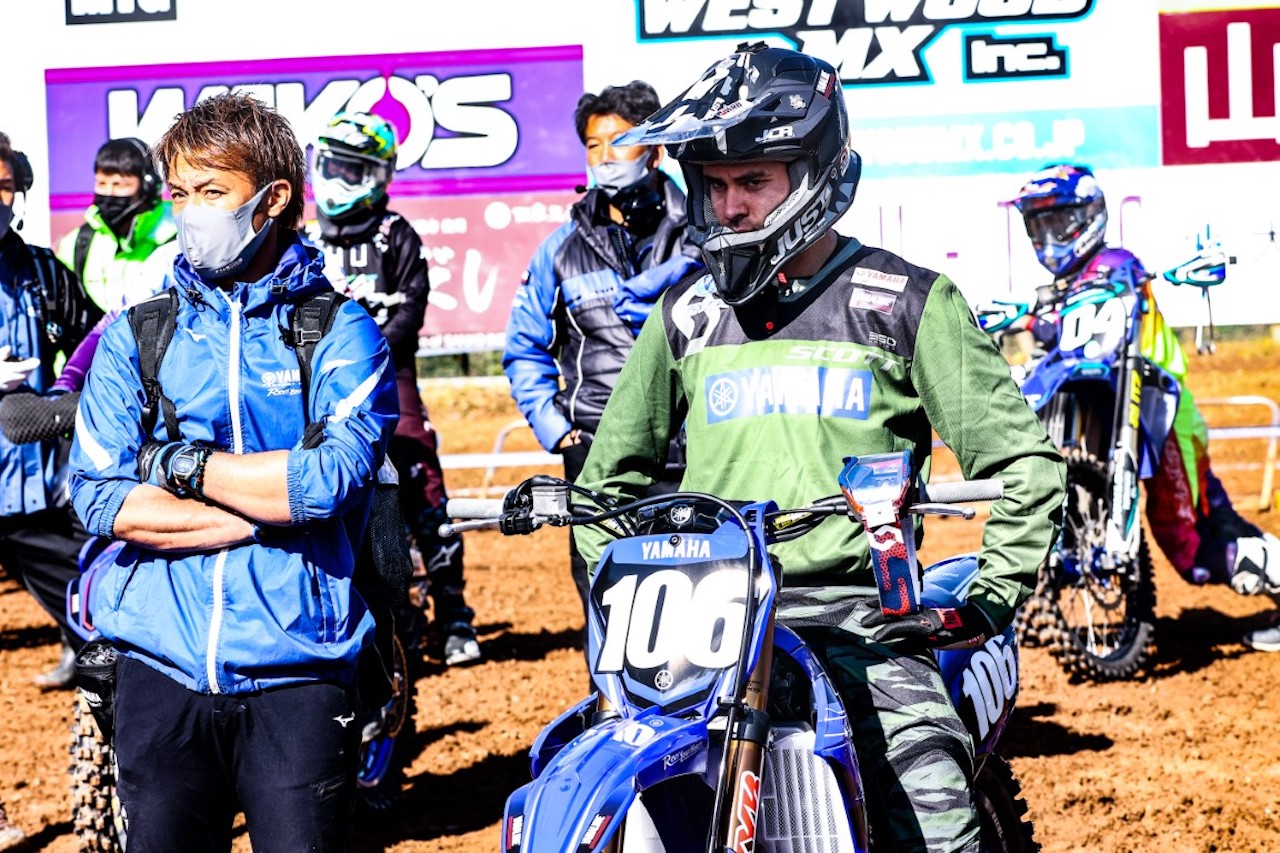 Jay Wilson will fly out to Japan in the coming weeks to take up his new role as a factory Yamaha rider the All-Japan National Motocross Championship where he will contest the IA2 (250cc) division as well as assist in a coaching, testing and future product development role with Yamaha.
Jay Wilson will fly out to Japan in the coming weeks to take up his new role as a factory Yamaha rider the All-Japan National Motocross Championship where he will contest the IA2 (250cc) division as well as assist in a coaching, testing and future product development role with Yamaha.
“This is the dream job for me as it encompasses the three passions I have in dirt bikes- racing, coaching and development,” Wilson begins. “I still have the motivation to race and win championships and that is my primary role with Yamaha in Japan and the new venture has me motivated and as excited as I have ever been.”
“I also get the opportunity to share my knowledge with Yamaha riders in Japan and hopefully I can assist them to race at a higher level and secure future success for Yamaha in the coming years as well as be a small part of their testing program for product development. It’s a huge opportunity and a big responsibility but one my family and I are looking forward to.”
2022 All Japan Motocross Championship Calendar
Rd 1 – April 9 and 10 – Kyushu, Kumamoto
Rd 2 – May 14 and 15 – Kanto, Saitama
Rd 3 – June 11 and 12 – Cyugoku, Hiroshima
Rd 4 – July 16 and 17, Sugo, Miyagi
Rd 5 – September 10 and 11, Kinki, Nara
Rd 6 – October 8 and 9, Kyushu, Kumamoto
Rd 7 – October 29 and 30, Kanto, Saitama
Rd 8 – November 11 and 12, Sugo, Miyagi
PHOTOS OF STABILIZERS IN MOTOCROSS
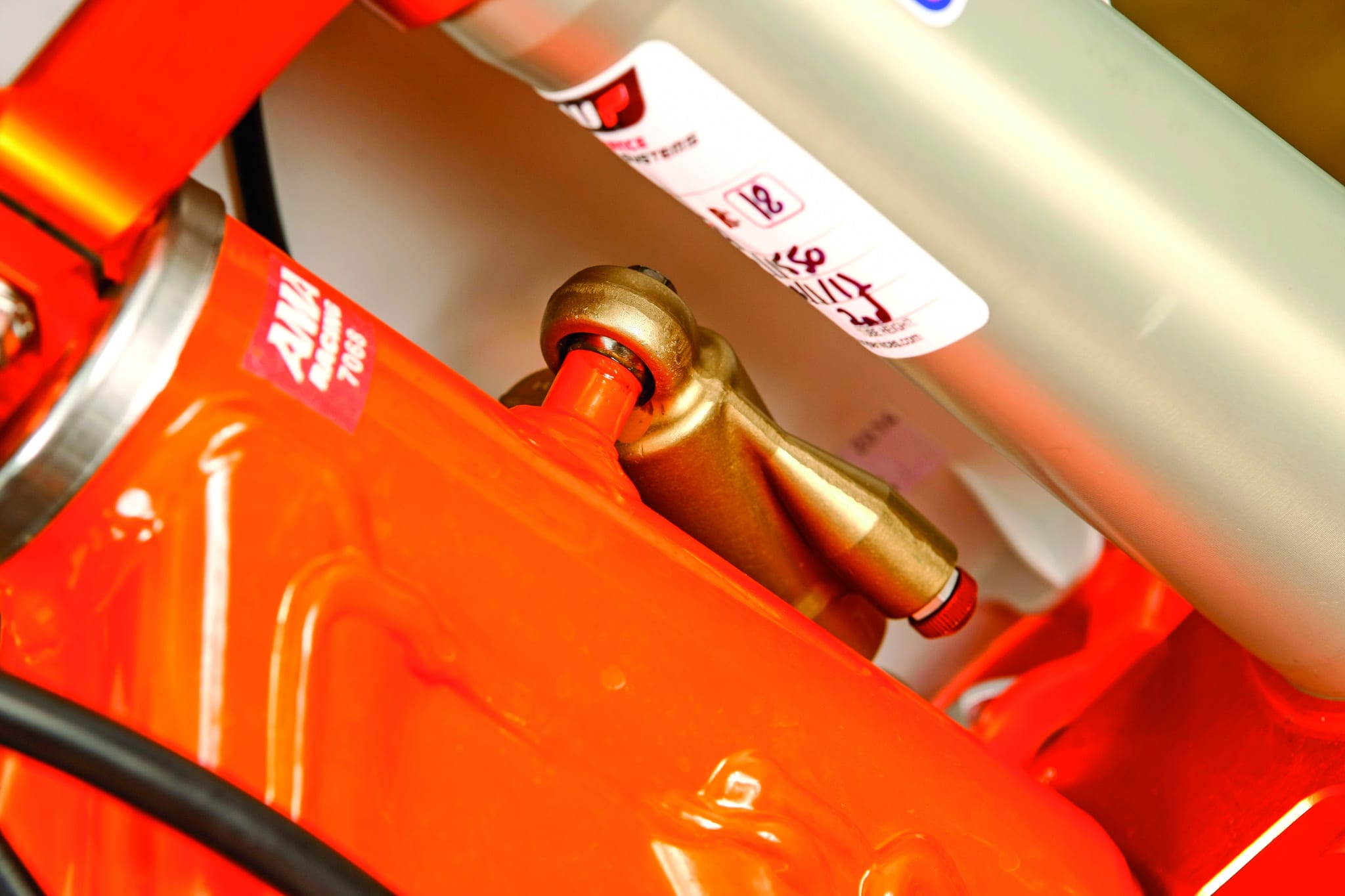 Ryan Dungey’s 2013 KTM 450SXF Factory Edition ran the Honda steering stabilizer.
Ryan Dungey’s 2013 KTM 450SXF Factory Edition ran the Honda steering stabilizer.
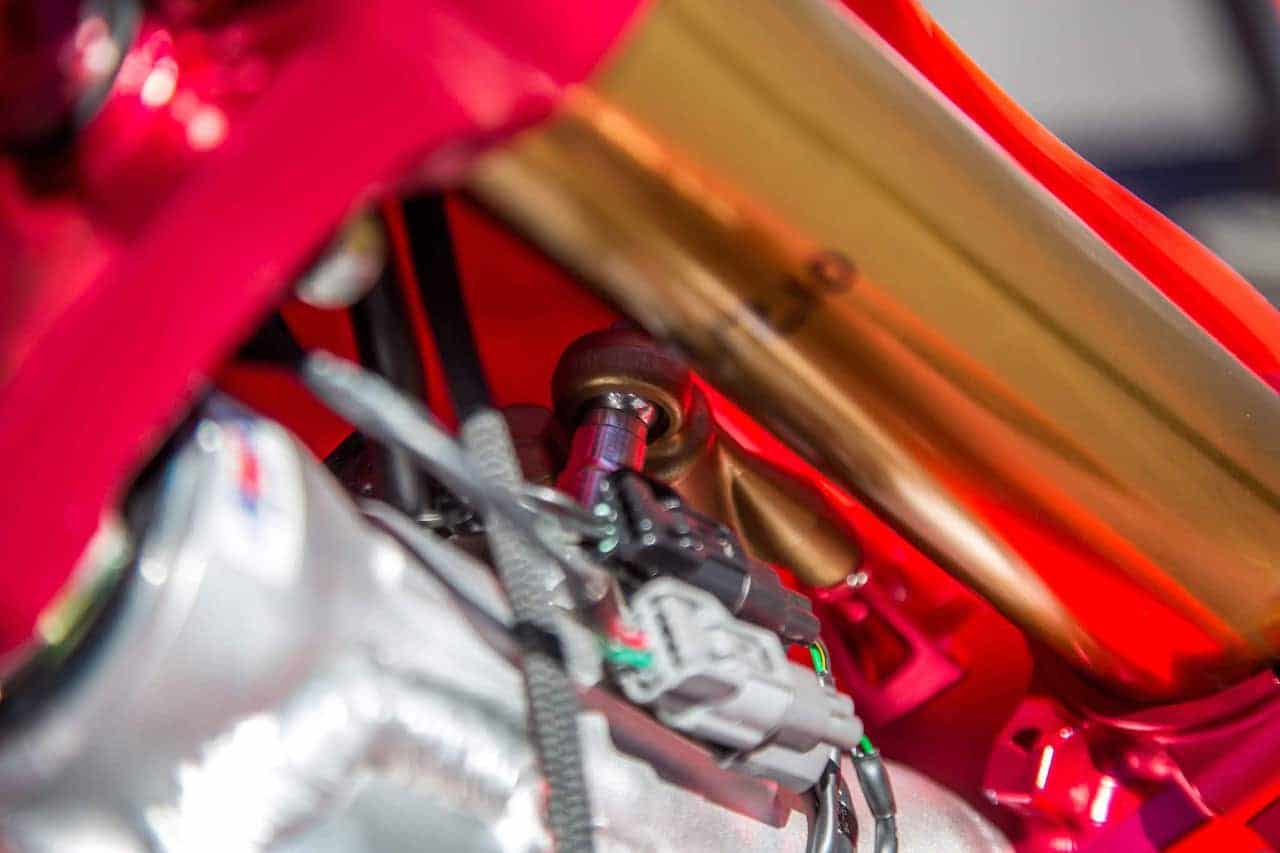 This is a blurry shot of Hunter Lawrence’s 2022 Honda CRF250 race bike with the Honda steering stabilizer. We filmed a full video on this bike with his mechanic, Cameron Camera, explaining all of the details about this bike. (Click here for the video).
This is a blurry shot of Hunter Lawrence’s 2022 Honda CRF250 race bike with the Honda steering stabilizer. We filmed a full video on this bike with his mechanic, Cameron Camera, explaining all of the details about this bike. (Click here for the video).
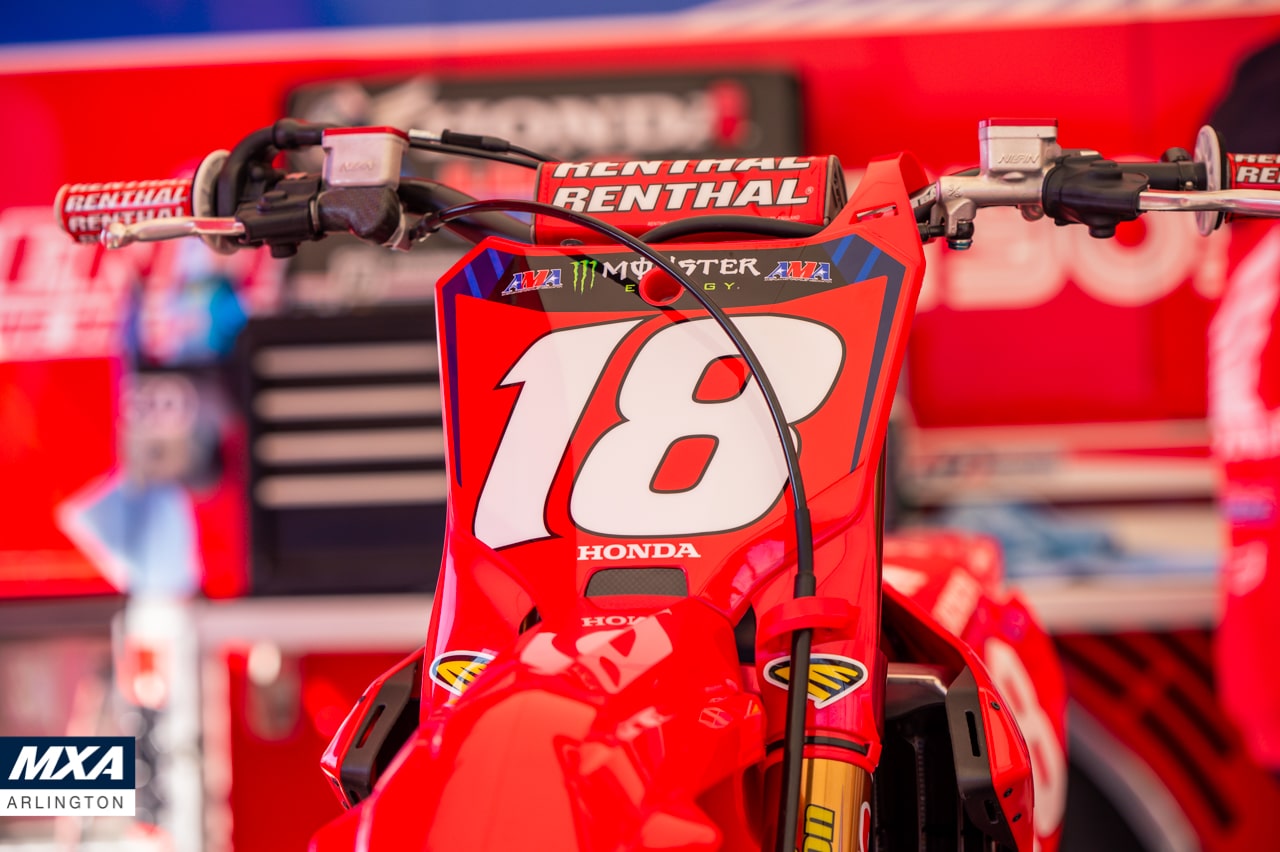 The Honda team covers the bottom of their front number plate with carbon now to hide the steering stabilizer.
The Honda team covers the bottom of their front number plate with carbon now to hide the steering stabilizer.


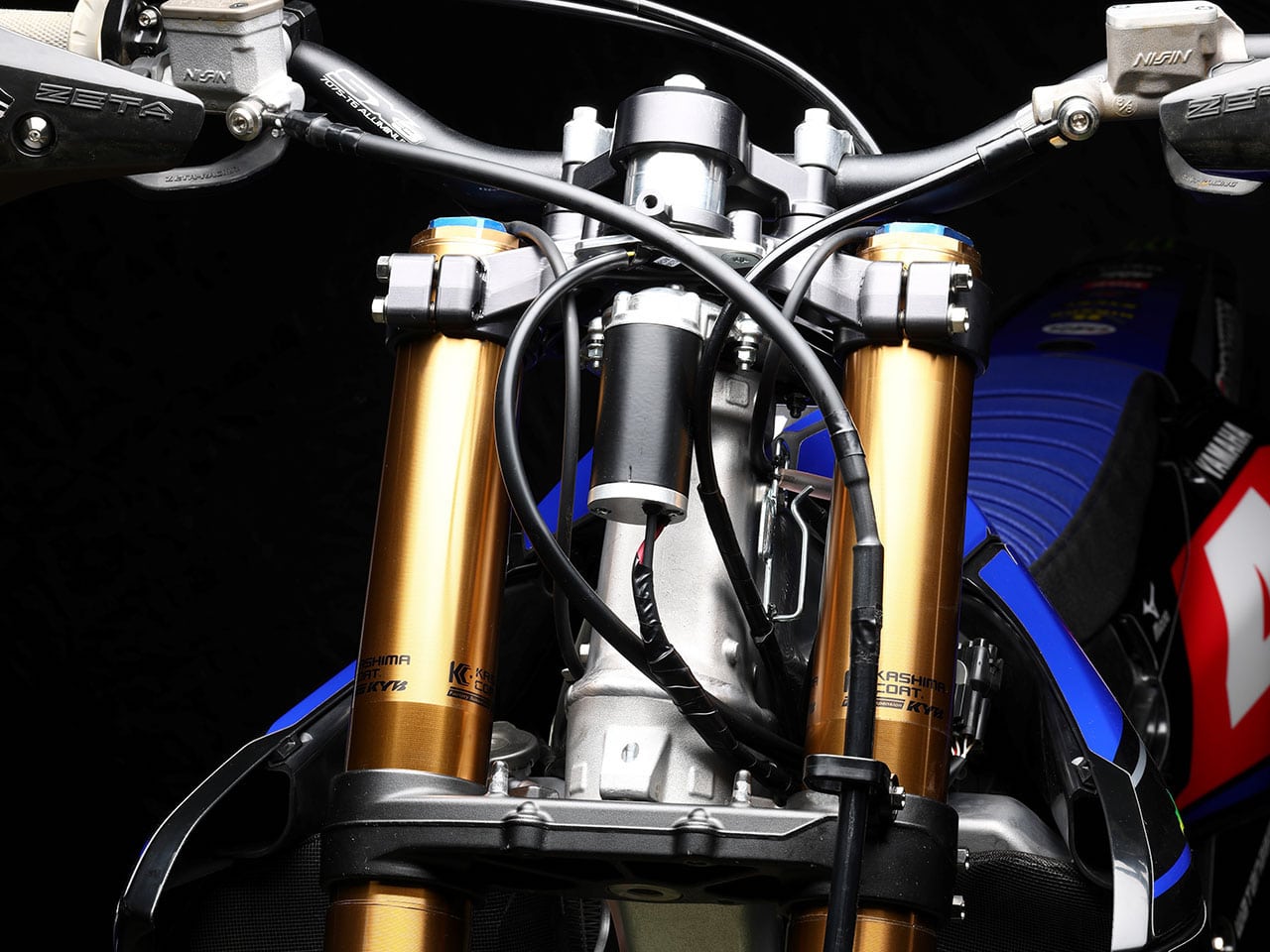
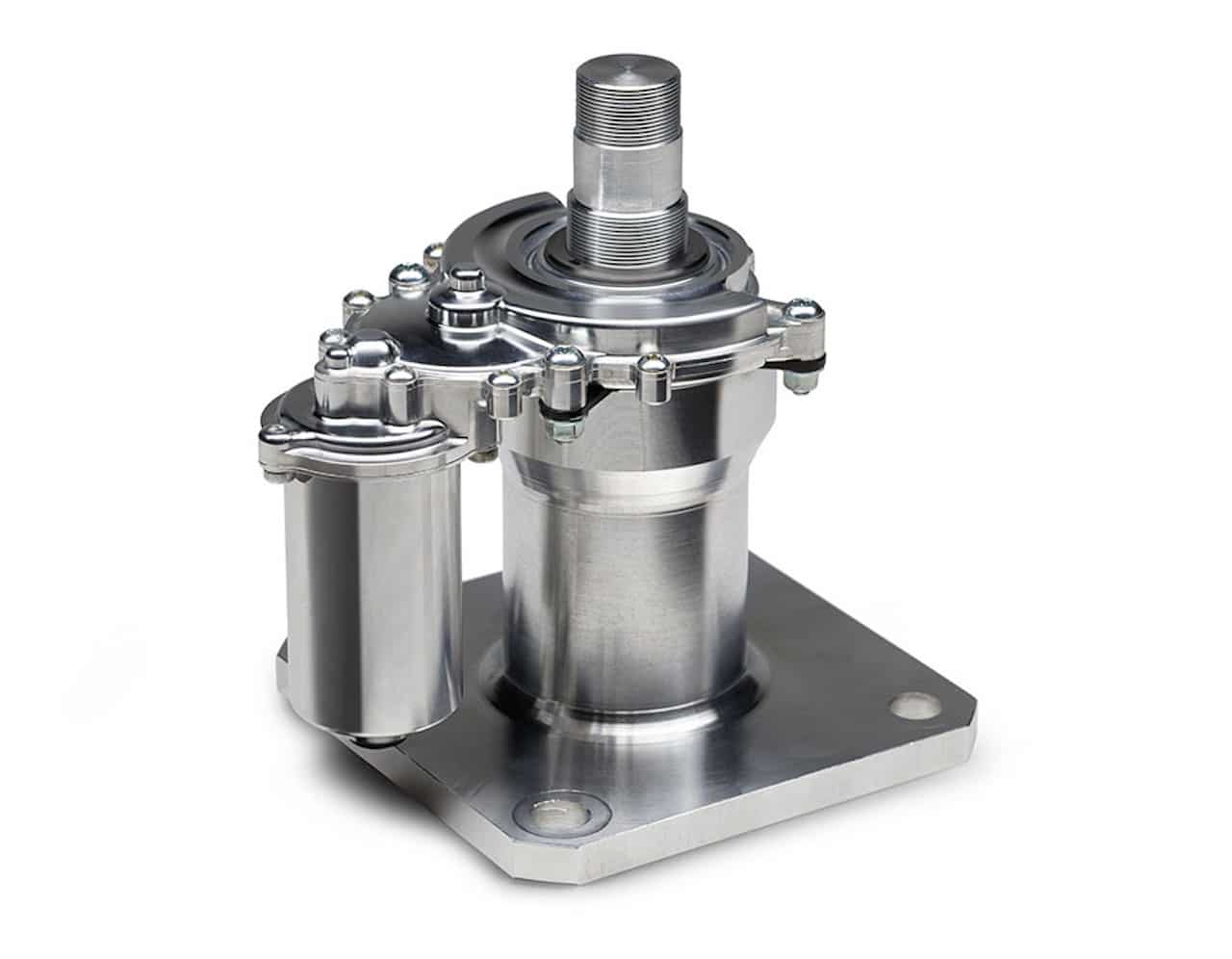



Comments are closed.